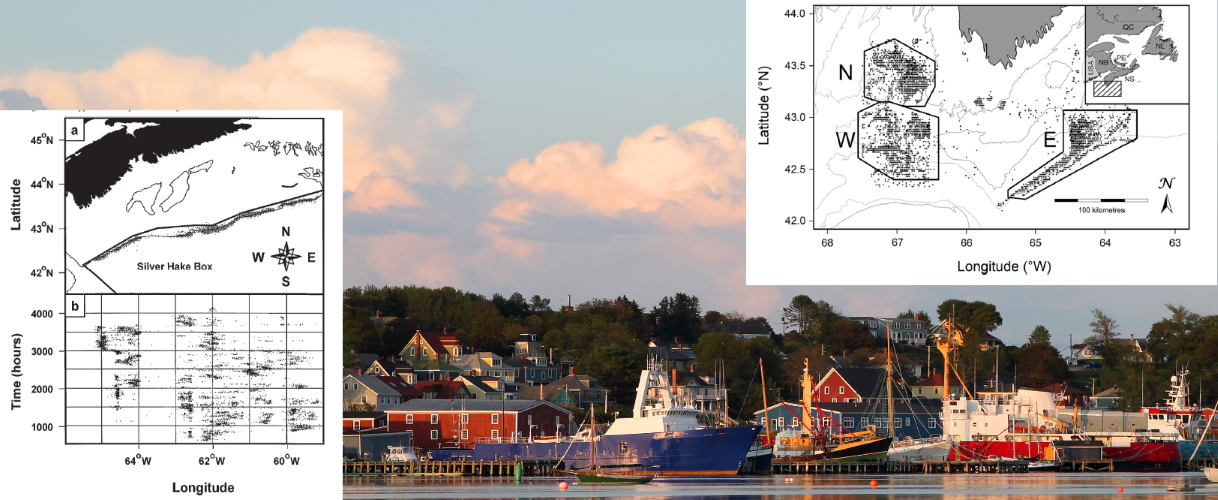ScotianShelf

Scotian Shelf Collage
The Scotian Shelf extends from the coast of Nova Scotia (Canada) from 64 to 130 n.mi. into the North Atlantic. Our work here has examined patterns in fishing effort in mobile gear fisheries for species including Silver Hake (Gillis 1999, Gillis and Showell 2002 ) on the shlef-break (map inset on the left, above), the changing effort patterns through the decline in the Cod (Gadus morhua) fishery in the 1980s (Gillis and Frank 2001](https://doi.org/10.1006/jmsc.2000.0990) ), and the mixed gadid fishery (Van Der Lee et al. 2013) of South Western Nova Scotia (map inset on the right, above). This work performed with colleagues at the Bedford Institute of Oceanography. Topics examined include vessel competition, information exchange, and the application of the ideal free distribution to effort dynamics (Gillis 2003). Key contributions to the interpretation of commercial fisheries data are 1) the application of isodar theory to incorporate cost differences in the prediction and interpretation of spatial effort distributions (Gillis and Van Der Lee 2012,VanDer Lee et al. 2014) and 2) the examination of behavioural and statistical biases that can impact the preceived relationship between catch and effort (Aljafary et al. 2019). Our current work is focused on the interplay of catch and effort and its impact on the interpetation of fishery statistics through the use of empirical dynamic modeling and structural equation modeling.
